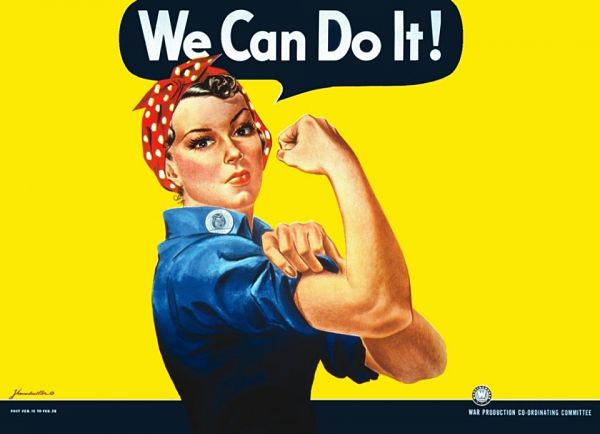Creating Equality in the Workplace Everyone’s Responsibility
 Why does gender inequality in the workplace persist, and who should be responsible for eliminating it?
Why does gender inequality in the workplace persist, and who should be responsible for eliminating it?
Some advocacy organizations emphasize the role of workplace policies and national legislation like the Lily Ledbetter Fair Pay Act of 2009. On the other hand, Facebook COO Cheryl Sandberg’s call for women to ‘lean in’ and act more aggressively in their careers puts the onus on individual women. But a middle-of-the-road approach acknowledging the mutual influence of individuals and organizations may be more effective, says psychologist Naomi Ellemers. “Instead of blaming each other for lack of progress, each party can contribute in their own way to achieving parity,” she writes in an article for Policy Insights from the Behavioral and Brain Sciences.
Gender inequality in the workplace has been documented for decades. Although women make up almost half of the U.S. labor force, they currently represent less than 5 percent of CEOs in the highest-earning companies as rated by the Fortune 1000 list. Women with business degrees earn almost 20 percent less money than their male peers, and female scientists receive less research funding and lower salaries, even when they have equal qualifications.

The Federation of Associations in Behavioral and Brain Sciences, or FABBS, with SAGE, the parent of Social Science Space, publishes the journal Policy Insights from the Behavioral and Brain Sciences. This annual journal features research findings in the sciences of mind, brain, and behavior that are applicable to nearly every area of public policy. The first issue comprises 33 articles in social and personality psychology focused on topics including health, education, justice, the environment, and inequality.
Implicit gender bias is the main reason these patterns remain despite anti-discrimination legislation and workplace policies, suggests Ellemers’ review of research. Unlike the explicit, intentional discrimination that was targeted by the Lily Ledbetter Act, implicit gender bias is subtle and often subconscious. Implicit bias takes the form of inaccurate perceptions and expectations of women based on stereotypes about their abilities, ambitions, and priorities. These stereotypes erect “invisible barriers” that create vicious cycles: women are evaluated differently than men, so they see fewer opportunities for advancement and success, which undermines their motivation and performance, ultimately supporting the stereotypes.
According to the research Ellemers reviewed in “Women at Work: How Organizational Features Impact Career Development,” implicit bias operates in multiple ways. Stereotypes about women can lead to a perceived lack of fit between them and organizations. For example, women are perceived to experience more struggles with work-family balance than men, when in fact both genders report equal challenges. Even positive stereotypes can be problematic. Studies find that, because of stereotypes about women’s superior social and emotional skills, they are often appointed to leadership positions during times of crisis or high risk, when they are more likely to fail and therefore confirm stereotypes about their lack of leadership skill.
Anti-discrimination policies are not enough to overcome implicit bias; in fact, they can make it worse, Ellemers writes. That’s because of what she calls the paradox of equality: well-intentioned policies make both women and men falsely believe that everyone is competing on a level playing field and that differences in performance are due solely to effort and ability.
What can be done? Ellemers says that the first step is for organizations and individuals to recognize implicit bias in hiring, promotions, and other business operations. Workplaces can develop clear criteria for hiring, compensation, and promotion “instead of relying on subjective impressions [or] ambiguous prototypes,” and women can request that such criteria be specified, she recommends. Organizations can also engage women in setting and evaluating their career goals and female employees should not be shy about stating their ambitions and seeking support. Creative solutions to work-family balance and guidance and mentoring for women can also help, she advises.
Addressing implicit bias requires that both businesses and employees look at the big picture. “Individual success stories do not demonstrate the broader effectiveness of policy measures,” Ellemers writes. ‘Leaning in’ may work for one woman, but not for others. Litigation to redress unequal pay may solve some problems, but not others. “The key to actually providing equal career opportunities for men and women,” according to Ellemers, is “acknowledging that this is hard to achieve” and accepting that everyone needs to play a part.




























































































